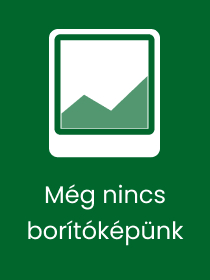
Mittani Palaeography
Sorozatcím: Cuneiform Monographs; 48;
-
8% KEDVEZMÉNY?
- A kedvezmény csak az 'Értesítés a kedvenc témákról' hírlevelünk címzettjeinek rendeléseire érvényes.
- Kiadói listaár EUR 179.00
-
75 931 Ft (72 316 Ft + 5% áfa)
Az ár azért becsült, mert a rendelés pillanatában nem lehet pontosan tudni, hogy a beérkezéskor milyen lesz a forint árfolyama az adott termék eredeti devizájához képest. Ha a forint romlana, kissé többet, ha javulna, kissé kevesebbet kell majd fizetnie.
- Kedvezmény(ek) 8% (cc. 6 074 Ft off)
- Kedvezményes ár 69 857 Ft (66 531 Ft + 5% áfa)
Iratkozzon fel most és részesüljön kedvezőbb árainkból!
Feliratkozom
75 931 Ft

Beszerezhetőség
Bizonytalan a beszerezhetőség. Érdemes még egyszer keresni szerzővel és címmel. Ha nem talál másik, kapható kiadást, forduljon ügyfélszolgálatunkhoz!
Why don't you give exact delivery time?
A beszerzés időigényét az eddigi tapasztalatokra alapozva adjuk meg. Azért becsült, mert a terméket külföldről hozzuk be, így a kiadó kiszolgálásának pillanatnyi gyorsaságától is függ. A megadottnál gyorsabb és lassabb szállítás is elképzelhető, de mindent megteszünk, hogy Ön a lehető leghamarabb jusson hozzá a termékhez.
A termék adatai:
- Kiadó BRILL
- Megjelenés dátuma 2019. december 19.
- ISBN 9789004417236
- Kötéstípus Keménykötés
- Terjedelem396 oldal
- Méret 235x155 mm
- Súly 774 g
- Nyelv angol 0
Kategóriák
Rövid leírás:
In Mittani Palaeography, Zenobia Homan analyses cuneiform writing from Late Bronze Age northern Mesopotamia, reflecting on local scribal traditions, regional adaptation, international political change, and the ways in which written knowledge travelled within the cuneiform culture of the Middle East.
TöbbHosszú leírás:
In Mittani Palaeography, Zenobia Homan analyses cuneiform writing from the Late Bronze Age Mittani state, which was situated in the region between modern Aleppo, Erbil and Diyarbak?r. The ancient communication network reveals a story of local scribal tradition blended with regional adaptation and international political change, reflecting the ways in which written knowledge travelled within the cuneiform culture of the Middle East.
Mittani signs, their forms, and variants, are described and defined in detail utilising a large digital database and discussed in relation to other regional corpora (Assyro-Mittanian, Middle Assyrian, Nuzi and Tigunanum among others). The collected data indicate that Mittanian was comparatively standardised ? an innovation for the period ? signifying the existence of a centralised system of scribal training.
Tartalomjegyzék:
In Mittani Palaeography, Zenobia Homan analyses cuneiform writing from Late Bronze Age northern Mesopotamia, reflecting on local scribal traditions, regional adaptation, international political change, and the ways in which written knowledge travelled within the cuneiform culture of the Middle East.
Több

Mittani Palaeography
75 931 Ft
69 857 Ft

Play-N-Worship for Toddlers and Twos Vol. 1: 50 Coloring Pages for the 10 Booster Pack Bible Story Boards
5 823 Ft
5 357 Ft

Geriatric Home-Based Medical Care: Principles and Practice
49 924 Ft
45 929 Ft








